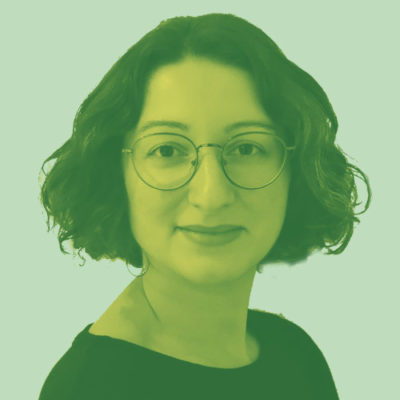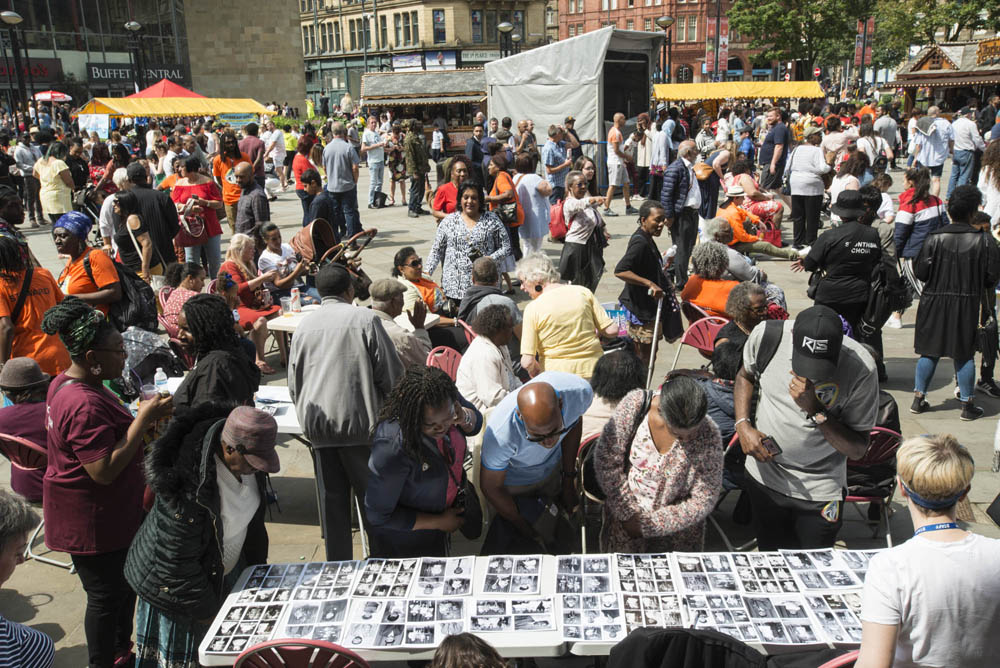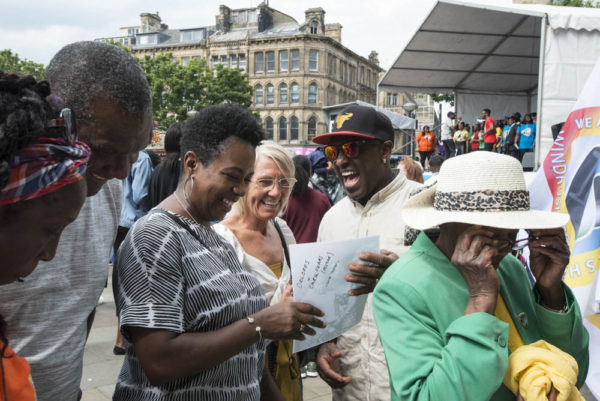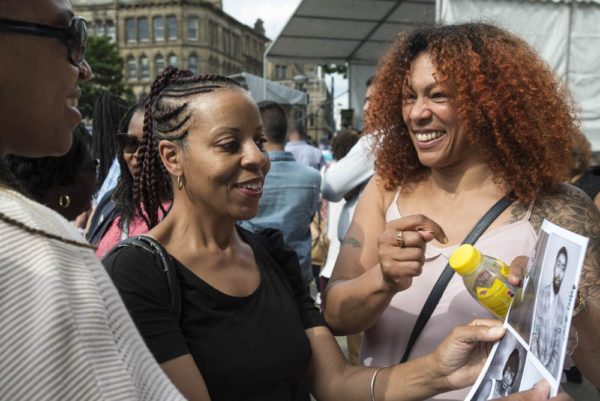
Sarah Ledjmi
In June 2019, I joined our project partners Elizabeth Llabres (Bradford Museums and Galleries) and Tim Smith for an activity that formed part of the Windrush Day celebrations in City Square. They had made copies of photographs from the Belle Vue Studio, a former local portrait studio, that featured Bradfordians from the Afro-Caribbean community. The hope was that some of the people in the images might be recognised and named.

Sharing the Belle Vue Studio photographs on Windrush Day in City Park, Bradford in June 2019. Image credit: Tim Smith
As passers-by start to leaf through the piles of photographs, smiles widen, conversations start, nicknames are remembered, neighbours are brought back to life, and family members are seen afresh in a new light, in black and white. It’s a very intimate and joyous moment, and it starts with the photos on the table.

Windrush Day celebrations in City Square in June 2019. ‘It’s a very intimate and joyous moment, and it starts with the photos on the table’. Image credit: Tim Smith
Over the course of the BNMP project, the Belle Vue Studio archive has been a great way for me to think about how the National Science and Media Museum – its subject matter, collections and our roles as those who work there – sits in Bradford.
I’ve always thought of ‘photographs’ as a contentious subject for the museum – I first started working at NSMM when the Royal Photography Society collection transfer was decided, because the museum had changed and would now steer away from ‘big name’ photography exhibitions.

‘The Belle Vue Studio archive has been a great way for me to think about how the National Science and Media Museum – its subject matter, collections and our roles as those who work there – sits in Bradford’. Image credit: Tim Smith
I remember being told that the Belle Vue archive had originally been offered to the museum, but that these photographs didn’t align with the museum’s priorities in the late 1980s. They are now part of the Bradford Museums and Galleries’ collection. There are of course still millions of photographs in the NSMM’s stores, and most other museums in the country have their own photo collection. Photographs are not hard to come by, and just as I keep deleting pictures from my phone to make space for new moments to be documented, so the museum must make decisions about what in its stores support its mission, what it means to be a useful museum, and how to spend its resources to achieve that.

‘What matters is that there are people in front of me, in Bradford, holding a photograph, and they have a stake in both the national story and the Bradford story, which is really ONE story’. Image credit: Tim Smith
In that moment in City Square, I thought about what the photographs did, acting as conversation starters and memory refreshers. I thought that maybe the big question for our museum isn’t who holds what, and who looks after ‘the national story of photography’ and ‘the story of Bradford’. I think then that what matters is that there are people in front of me, in Bradford, holding a photograph, and they have a stake in both stories, which is really ONE story. But I wouldn’t know that without them. In my day-to-day job as a curator, I keep forgetting, and keep remembering. So, how do we keep THAT conversation going?
Read responses to Sarah's moment
Sarah Ledjmi's bio
I work at the Science and Media Museum as the Associate Curator for the new Sound and Vision galleries we are developing. The new galleries will tell a national story of media technologies and present an opportunity to reflect on which stories we tell, and who we tell them with. One of my key ambitions for the new galleries is to feature as many Bradford people as possible: because there’s a rich local tradition of innovation in media technology, but also because the city is as representative of ‘the National story’ as any other. The tension between local and national (and the different meanings these adjectives hide) is at the heart of my work and I’ve had the chance to explore these themes further with the BNMP project over the last 3 years. Since working at the museum I’ve become increasingly keen to challenge uncritical and celebratory national narratives. I’ve started to recognise a lot of people and organisations I’ve worked with in Bradford as doing the work of resistance to these narratives, and this has had a deep impact on my politics and my understanding of my own French-Tunisian heritage.



